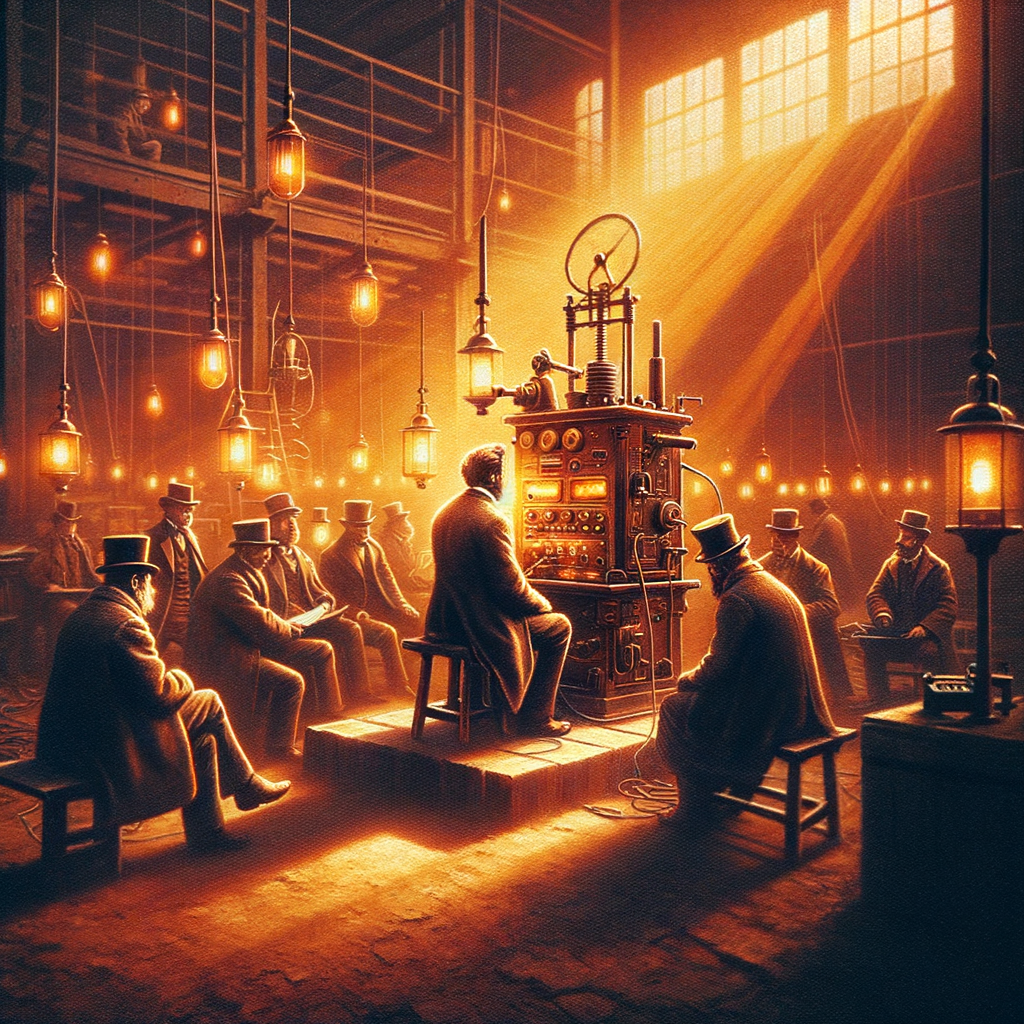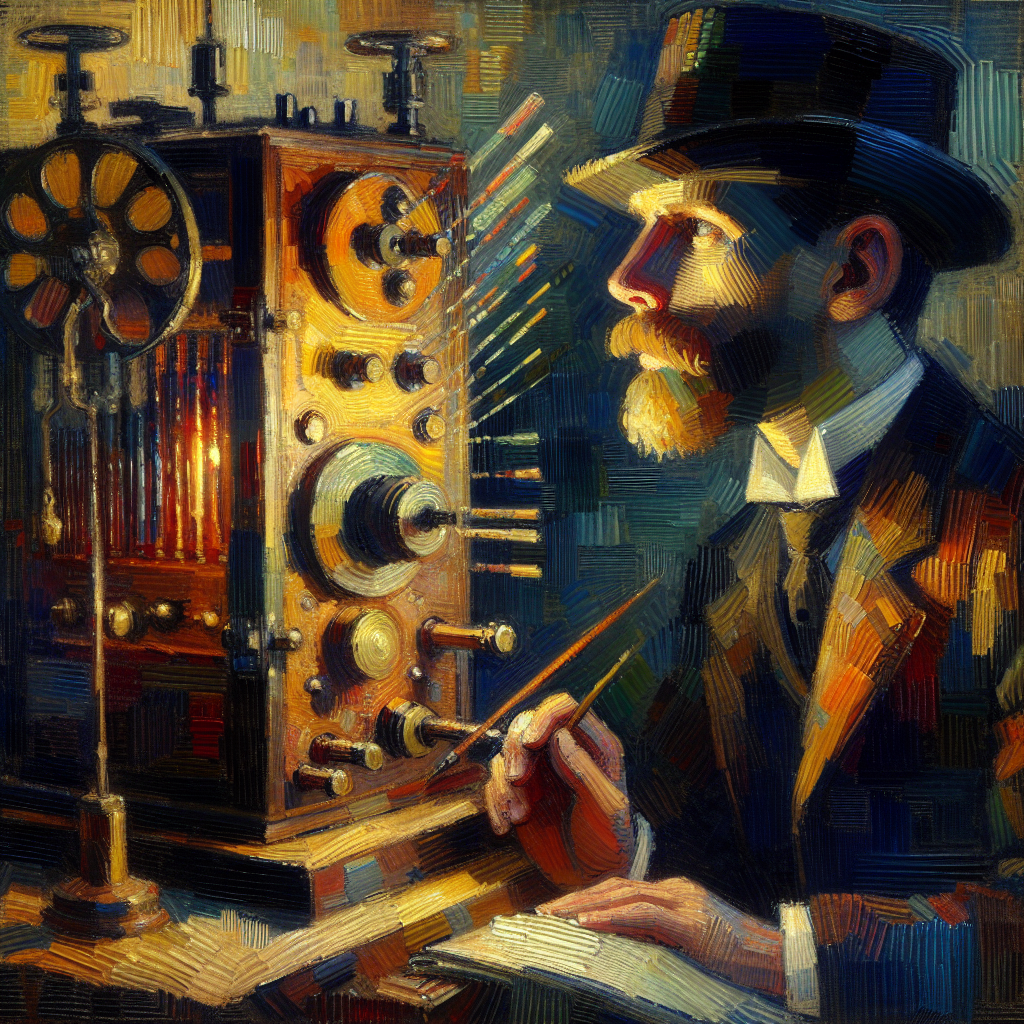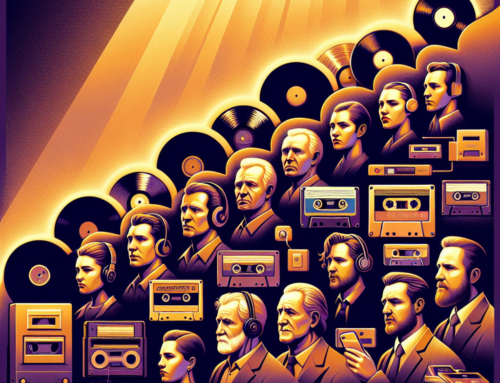-
Table of Contents
“Radio: Revolutionizing Communication Since the 1890s.”
Introduction
The invention of the radio was a pivotal moment in the history of communication, marking the transition from wired to wireless transmission of information. The development of radio technology was not the work of a single individual but rather a culmination of efforts by several inventors and scientists over the late 19th and early 20th centuries. Key figures in the invention of the radio include Guglielmo Marconi, who is often credited with the first successful demonstration of wireless telegraphy in the 1890s, and Nikola Tesla, who made significant contributions to the development of radio technology. Marconi’s work, particularly his transatlantic radio signal transmission in 1901, demonstrated the practical potential of radio communication, leading to its widespread adoption and the eventual establishment of radio broadcasting as a major medium for mass communication.
Our hot take – free radio function on PlaylistSound – read how to use
The Evolution Of Radio: Tracing Its Invention And Impact

The story of radio is a fascinating journey through time, filled with innovation, experimentation, and a bit of serendipity. It all began in the late 19th century, a period brimming with scientific curiosity and technological breakthroughs. The invention of the radio cannot be attributed to a single individual; rather, it was the result of contributions from several brilliant minds. Among them, Guglielmo Marconi is often credited as the father of radio. In the 1890s, Marconi, an Italian inventor, successfully transmitted wireless signals over a distance, which was a groundbreaking achievement at the time. His work built upon the earlier discoveries of Heinrich Hertz, who had demonstrated the existence of electromagnetic waves, and Nikola Tesla, who had developed the theoretical basis for wireless communication.
As we trace the evolution of radio, it’s important to recognize the collaborative nature of scientific progress. Marconi’s success in sending the first transatlantic radio signal in 1901 was a pivotal moment, marking the beginning of a new era in communication. This achievement was not just a testament to Marconi’s ingenuity but also a reflection of the cumulative efforts of many scientists and inventors who laid the groundwork for his success. The early 20th century saw rapid advancements in radio technology, with the development of vacuum tubes and amplifiers that improved the quality and range of radio transmissions.
The impact of radio on society was profound and far-reaching. In the 1920s, radio became a popular medium for entertainment and information, transforming the way people consumed news and music. Families would gather around their radio sets, listening to live broadcasts of music, drama, and news, creating a shared cultural experience that transcended geographical boundaries. Radio also played a crucial role during times of crisis, such as World War II, when it served as a vital tool for communication and propaganda. The immediacy and reach of radio broadcasts allowed governments to disseminate information quickly and effectively, shaping public opinion and morale.
As we moved into the latter half of the 20th century, radio continued to evolve, adapting to the changing technological landscape. The advent of FM radio brought improved sound quality, while the rise of transistor radios made the medium more portable and accessible. Radio stations began to diversify their programming, catering to niche audiences with specialized content, from talk shows to music genres that were previously underrepresented. This diversification helped radio maintain its relevance in an increasingly competitive media environment.
In recent years, the digital revolution has transformed radio once again. The rise of internet radio and podcasts has expanded the possibilities for audio content, allowing listeners to access a vast array of programming on demand. Despite these changes, the essence of radio remains the same: a powerful medium for storytelling, connection, and communication. As we reflect on the evolution of radio, it’s clear that its invention was not just a technological milestone but a cultural one as well. The radio has not only shaped the way we communicate but also the way we experience the world, bringing people together through the shared experience of sound.
Key Figures In The Invention Of Radio: A Historical Overview
When we think about the invention of the radio, it’s easy to imagine a single eureka moment where one brilliant mind suddenly brought this revolutionary technology to life. However, the reality is far more complex and fascinating, involving a tapestry of inventors, scientists, and engineers, each contributing their own piece to the puzzle. Let’s take a journey through history to meet some of the key figures who played pivotal roles in the invention of radio.
First up, we have James Clerk Maxwell, a Scottish physicist whose theoretical work laid the groundwork for radio waves. In the 1860s, Maxwell developed a set of equations that described how electric and magnetic fields interact. These equations predicted the existence of electromagnetic waves, which would later become the backbone of radio technology. Although Maxwell never saw his theories put into practice, his work was crucial in setting the stage for future discoveries.
Fast forward a couple of decades, and we encounter Heinrich Hertz, a German physicist who, in the late 1880s, became the first person to successfully demonstrate the existence of electromagnetic waves. Hertz’s experiments proved that these waves could be transmitted and received, providing the first tangible evidence of what Maxwell had theorized. It’s no wonder that the unit of frequency, the hertz, is named in his honor.
As we move into the 1890s, the story of radio invention becomes even more intriguing with the contributions of Nikola Tesla and Guglielmo Marconi. Tesla, a Serbian-American inventor, was a visionary who held numerous patents related to wireless communication. He demonstrated the potential for transmitting signals without wires, envisioning a world where information could be sent across great distances through the air. However, Tesla’s work was often overshadowed by his eccentric personality and financial struggles.
Enter Guglielmo Marconi, an Italian inventor who is often credited with the practical development of radio. Marconi was a savvy entrepreneur who saw the commercial potential of wireless communication. In 1895, he successfully sent a wireless signal over a distance of one and a half miles, and by 1901, he had transmitted the first transatlantic radio signal. Marconi’s achievements earned him widespread recognition and a Nobel Prize in Physics in 1909, which he shared with Karl Ferdinand Braun, another key figure in the development of radio technology.
While Marconi is often celebrated as the father of radio, it’s important to acknowledge the contributions of others who played significant roles. For instance, Reginald Fessenden, a Canadian inventor, made groundbreaking advancements in amplitude modulation (AM) that allowed for the transmission of voice and music, rather than just Morse code. In 1906, Fessenden conducted what is considered the first radio broadcast, featuring a live violin performance and a reading from the Bible.
As we reflect on the invention of radio, it’s clear that it was not the work of a single individual but rather a collaborative effort that spanned decades and continents. Each of these key figures brought their own unique insights and innovations, building upon the work of those who came before them. Their collective contributions have had a profound impact on the world, shaping the way we communicate and connect with one another. So, the next time you turn on the radio, take a moment to appreciate the rich history and the brilliant minds that made it all possible.
The Technological Breakthroughs Leading To The Invention Of Radio
The journey to the invention of the radio is a fascinating tale of curiosity, experimentation, and a bit of serendipity. It all began in the late 19th century, a time when the world was buzzing with new ideas and technological advancements. Imagine a world where electricity was still a novelty, and the idea of wireless communication was as fantastical as time travel. Yet, it was in this environment that the seeds of radio technology were sown.
The story kicks off with James Clerk Maxwell, a Scottish physicist whose theoretical work in the 1860s laid the groundwork for understanding electromagnetic waves. Maxwell’s equations suggested that it was possible to transmit signals through the air, a concept that was both revolutionary and perplexing at the time. Fast forward a couple of decades, and we meet Heinrich Hertz, a German physicist who, in the 1880s, took Maxwell’s theories and turned them into reality. Hertz successfully demonstrated the existence of electromagnetic waves, proving that they could indeed travel through space. This was a pivotal moment, as it confirmed that wireless communication was not just a figment of imagination but a tangible possibility.
As we move into the 1890s, the scene shifts to Italy, where a young inventor named Guglielmo Marconi was captivated by the idea of sending messages without wires. Marconi, with a mix of ingenuity and determination, built upon the work of his predecessors. He conducted experiments in his attic, tinkering with various components to create a device that could send and receive signals over long distances. By 1895, Marconi had successfully transmitted a wireless signal over a mile, a feat that caught the attention of the world. His work was groundbreaking, and it wasn’t long before he was sending signals across the English Channel and, eventually, the Atlantic Ocean.
While Marconi is often credited with the invention of the radio, it’s important to acknowledge the contributions of other inventors who played crucial roles in this technological breakthrough. Nikola Tesla, for instance, was a brilliant inventor who also experimented with wireless communication. In fact, Tesla had patented several devices related to radio technology before Marconi’s success. However, due to various legal battles and the complexities of patent law, Marconi’s name became more widely associated with the invention of the radio.
As we reflect on these technological breakthroughs, it’s clear that the invention of the radio was not the result of a single moment of genius but rather a culmination of efforts by many brilliant minds. Each inventor built upon the discoveries of those who came before, pushing the boundaries of what was possible. The radio, as we know it today, is a testament to human ingenuity and the relentless pursuit of knowledge.
In conclusion, the invention of the radio was a journey marked by curiosity, collaboration, and a bit of competition. It transformed the way we communicate, shrinking the world and bringing people closer together. As we tune into our favorite stations today, it’s worth remembering the pioneers who made it all possible, turning a wild idea into a reality that continues to connect us across distances.
How The Invention Of Radio Transformed Communication In The 20th Century
The invention of the radio was a game-changer in the 20th century, revolutionizing the way we communicate and connect with each other. It all started in the late 19th century when inventors like Guglielmo Marconi and Nikola Tesla were experimenting with wireless telegraphy. Marconi is often credited with inventing the radio, as he successfully sent and received the first radio signal in 1895. However, it’s important to note that many inventors contributed to the development of radio technology, each building on the work of others.
As we moved into the 20th century, radio technology began to evolve rapidly. By the 1920s, radio had become a household staple, bringing news, music, and entertainment into people’s homes. This was a time when families would gather around the radio, much like we do with televisions today, to listen to their favorite programs. The radio became a powerful tool for communication, allowing people to stay informed about world events and connect with cultures and ideas beyond their immediate surroundings.
One of the most significant impacts of radio was its role in disseminating information quickly and efficiently. During times of crisis, such as World War II, radio was crucial in keeping the public informed about the latest developments. It provided a sense of connection and solidarity, as people from different parts of the world could tune in to the same broadcasts and share in the collective experience. This ability to reach a wide audience in real-time was unprecedented and marked a significant shift in how information was shared and consumed.
Moreover, radio also played a pivotal role in shaping popular culture. It introduced new genres of music to the masses, from jazz in the 1920s to rock and roll in the 1950s. Radio DJs became influential figures, curating playlists that would define musical tastes for generations. The medium also gave rise to radio dramas and comedies, which captivated audiences with their storytelling and creativity. These programs laid the groundwork for the television shows and movies we enjoy today.
As we reflect on the impact of radio, it’s fascinating to consider how it paved the way for future technological advancements. The principles of wireless communication that were developed for radio laid the foundation for the invention of television, mobile phones, and the internet. Each of these innovations has further transformed how we communicate, but radio remains a beloved and enduring medium.
In today’s digital age, radio has adapted to new technologies, with many stations now streaming online and offering podcasts. This evolution ensures that radio continues to be a relevant and accessible form of communication, even as new platforms emerge. It’s a testament to the enduring power of radio that, despite the myriad ways we can now access information and entertainment, many people still enjoy tuning in to their favorite stations.
In conclusion, the invention of the radio was a transformative moment in the 20th century, reshaping communication and culture in profound ways. It connected people across distances, provided a platform for new voices and ideas, and laid the groundwork for future innovations. As we continue to explore new frontiers in communication technology, it’s worth remembering the humble beginnings of radio and the lasting impact it has had on our world.
Q&A
1. Who invented the radio?
– Guglielmo Marconi is credited with inventing the radio.
2. When was the first successful radio transmission?
– The first successful radio transmission was in 1895.
3. When did Marconi receive the first patent for the radio?
– Marconi received the first patent for the radio in 1896.
4. When was the first transatlantic radio signal sent?
– The first transatlantic radio signal was sent in 1901.The radio was invented in the late 19th century, with key developments occurring between the 1880s and the early 1900s. Guglielmo Marconi is often credited with inventing the first practical radio communication system, successfully demonstrating wireless telegraphy in 1895 and receiving the first transatlantic radio signal in 1901. However, the invention of the radio was a cumulative process involving contributions from several inventors, including Nikola Tesla, Heinrich Hertz, and Alexander Popov, who each made significant advancements in the understanding and application of electromagnetic waves.


